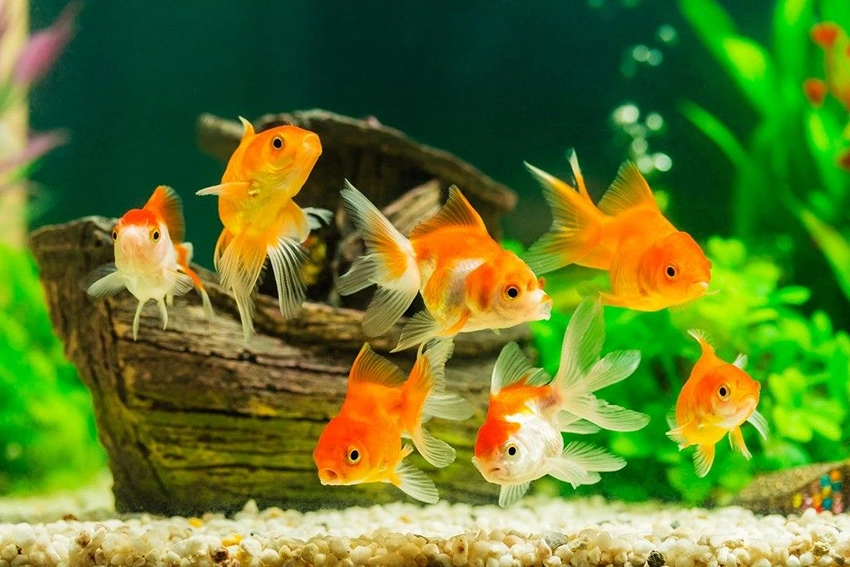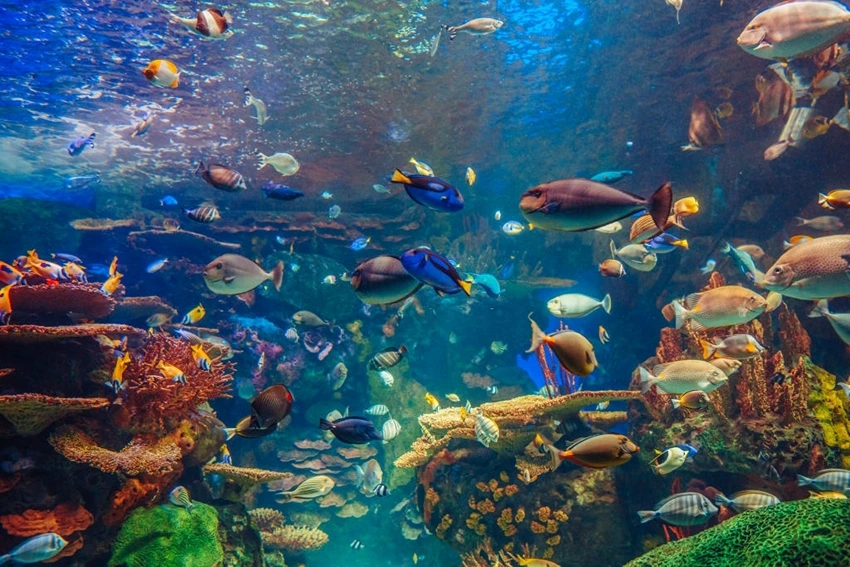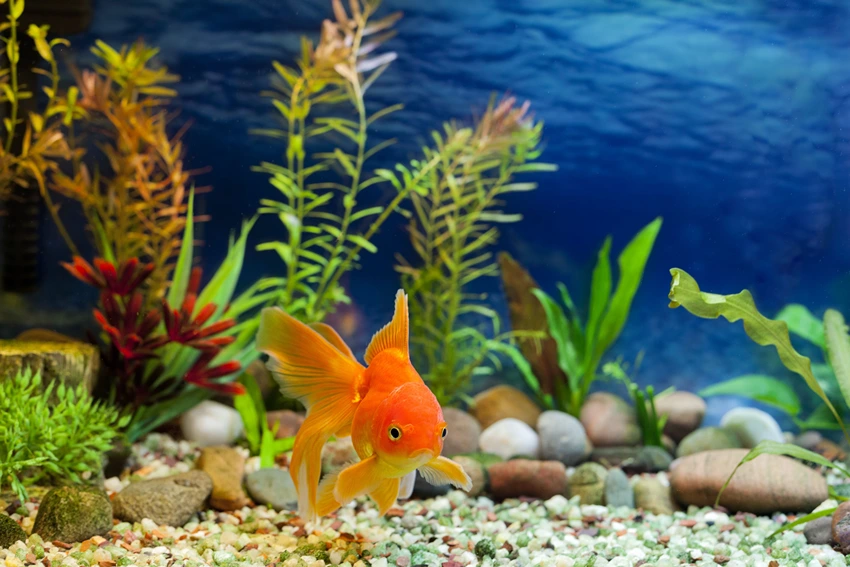Fish behavior is a fascinating subject that offers a window into the complex and often misunderstood world of aquatic life. By exploring the behaviors of fish, we gain insights into their survival strategies, social structures, and interactions with their environment. This article aims to shed light on the intricate behaviors of fish, focusing on insights from the United Kingdom, and provide a thorough understanding of these remarkable creatures.
Jump to:
Key Takeaways
- Fish exhibit a wide range of behaviors, from schooling and migration to feeding strategies and social interactions.
- Environmental and biological factors play a significant role in shaping fish behavior, including light, temperature, water flow, genetics, and health.
- Understanding fish behavior is crucial for conservation efforts, aquarium keeping, and the fishing industry.
Register for our latest in-depth reviews and product round-ups from the experts
Enter your email address below to receive our twice monthly reviews emails.
By entering your details, you are agreeing to our terms and conditions and privacy policy. You can unsubscribe at any time.
Introduction to Fish Behavior
Fish behavior encompasses the actions and reactions of fish to their environment and to other organisms. These behaviors are not just instinctual but can also be learned and adapted based on experiences. In the United Kingdom, where diverse aquatic habitats exist, from the cold waters of Scotland to the warmer regions around England’s south coast, fish behaviors are as varied as the species themselves.

Basic Principles of Fish Behavior
Instinct vs. Learned Behavior
Fish rely on both instinctive and learned behaviors to survive. Instinctive behaviors, such as the reflex to swim in a particular pattern, are hardwired into a fish’s genetics. Learned behaviors, on the other hand, involve adaptation to the environment and experiences, such as learning to avoid predators based on past encounters.
Common Behaviors: Schooling, Feeding, Migration
- Schooling is a common behavior observed in many fish species, providing safety in numbers from predators and enhancing foraging efficiency.
- Feeding behaviors vary widely among species, with some fish being opportunistic feeders and others having specialized diets.
- Migration is a critical behavior for many fish, undertaken for breeding, feeding, or as a response to seasonal temperature changes.
Factors Influencing Fish Behavior
Environmental Factors
| Factor | Impact on Fish Behavior |
| Light | Influences feeding and migration patterns, as well as predator-prey interactions. |
| Temperature | Affects metabolic rates, breeding cycles, and distribution of fish. |
| Water Flow | Plays a role in habitat selection, feeding strategies, and spawning behaviors. |
Fish in the UK’s rivers and coastal areas are particularly sensitive to changes in these environmental factors, adapting their behaviors to survive in varying conditions.
Biological Factors
Biological factors such as genetics, age, and health also significantly influence fish behavior. Genetic predispositions dictate certain behaviors, while age can affect the maturity and reproductive behaviors of fish. Health issues, often related to water quality, can alter normal behaviors, leading to stress and increased vulnerability to predators.
Social Behavior of Fish
Fish exhibit complex social behaviors, which can be observed in their schooling, territoriality, and reproductive activities. In the UK, species like the Atlantic salmon and brown trout are well-studied examples, showcasing a range of social interactions.

Schooling and Shoaling
Schooling, a form of collective behavior, is not just a defense mechanism but also a way for fish to enhance their foraging and increase their hydrodynamic efficiency. Shoaling refers to a looser social grouping, often a precursor to schooling, where fish share a common area without the synchronized movements seen in schools.
Territorial Behavior and Aggression
Territorial behavior is common among freshwater species in the UK, such as the brown trout, which defends its territory to secure prime feeding and spawning sites. Aggression can be triggered by competition for resources, mating opportunities, or as a response to invasion of space.
Reproductive Behavior
Reproductive behaviors in fish are diverse and often complex. Many species exhibit unique mating rituals, nest-building activities, and parental care strategies. In the UK, the three-spined stickleback is known for its elaborate mating dance and nest construction, showcasing the intricate nature of fish reproductive behavior.
Feeding Behavior
Fish have evolved a variety of feeding strategies that allow them to exploit different ecological niches. These strategies are influenced by the fish’s anatomy, available prey, and the specific conditions of their habitats.
Types of Feeders: Herbivores, Carnivores, Omnivores
| Type | Diet Examples | Common UK Species |
| Herbivores | Algae, plants | Grass carp |
| Carnivores | Fish, invertebrates | Pike, Perch |
| Omnivores | Mix of plant and animal matter | Roach, Common carp |
This diversity in dietary preferences showcases the adaptability of fish to their surroundings, ensuring the balance of aquatic ecosystems.
Strategies for Finding and Consuming Food
Fish employ various strategies to locate and consume their food, ranging from ambush predation to active foraging. In the UK, the pike is renowned for its ambush strategy, lying in wait for unsuspecting prey, while the common carp uses its barbels to search the sediment for food.

Migration and Navigation
Migration is a critical behavior for many fish species, undertaken for reasons such as breeding, feeding, or escaping unfavorable conditions. The mechanisms fish use to navigate across vast and often featureless waters remain one of nature’s marvels.
Reasons for Migration: Breeding, Feeding, Temperature
| Reason | Description | Examples in UK Waters |
| Breeding | To reach spawning grounds offering optimal conditions for offspring survival | Atlantic salmon, Sea trout |
| Feeding | To exploit abundant food resources in different areas or seasons | Herring, Mackerel |
| Temperature | To find waters with preferable temperatures for survival | Plaice, Cod |
How Fish Navigate During Migration
Fish use a combination of environmental cues, such as the Earth’s magnetic field, sun position, and water chemistry, to navigate during their migrations. Salmon, for instance, are believed to use olfactory cues to find their way back to their natal spawning grounds.
FAQs Based on ‘People Also Ask’
Fish school together primarily for protection against predators, increased hydrodynamic efficiency, and improved foraging success. Schooling can also play a role in enhancing mating opportunities.
Fish do not sleep in the same way humans do, but many enter a restful state where they are less active and their metabolism slows down. This rest state allows them to conserve energy while remaining alert to potential threats.
Some species of fish, particularly those kept in aquariums, can recognize and differentiate between humans, often associating them with feeding times or other interactions.
Aggression in fish can be triggered by various factors, including competition for food, mating rights, or territory. Environmental stressors, such as overcrowding or poor water quality, can also increase aggression.
Martin Cochran
Dive into fish care with Martin, your guide from the coastal beauty of Brighton. He shares tips on keeping your aquatic companions happy and healthy. Join him on a fin-tastic journey where every swim is a voyage of joy. Trust Martin for a smooth sailing aquatic experience.




